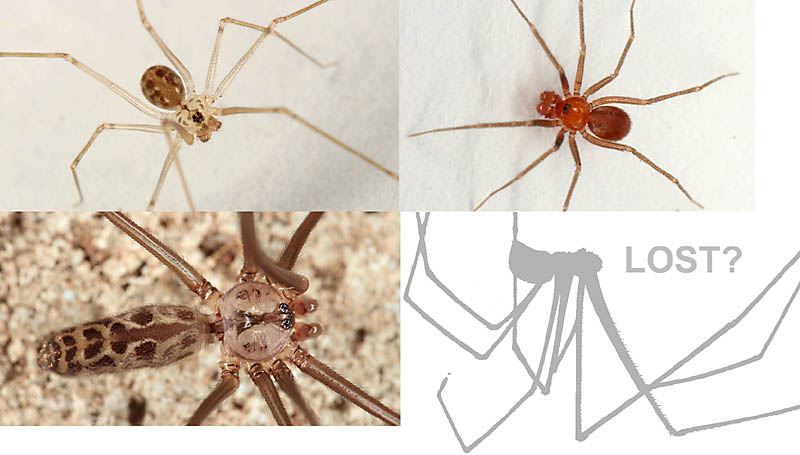(1) The local abundance of the introduced Modisimus culicinus (Simon, 1893) appears negatively correlated with the abundance of the native Galapa bella (Gertsch & Peck, 1992).
(2) The recently introduced Smeringopus pallidus (Blackwall, 1858) is now abundant in caves where a few decades ago the native and strongly troglomorphic Aymaria jarmila (Gertsch & Peck, 1992) was present. The latter species was not found in any of the six caves visited on Santa Cruz Island in 2019, suggesting that it may be seriously threatened.

Top: Modisimus culicinus (left) appears to displace Galapa bella (right).
Bottom: Smeringopus pallidus (left) seems to have replaced Aymaria jarmila (right.)